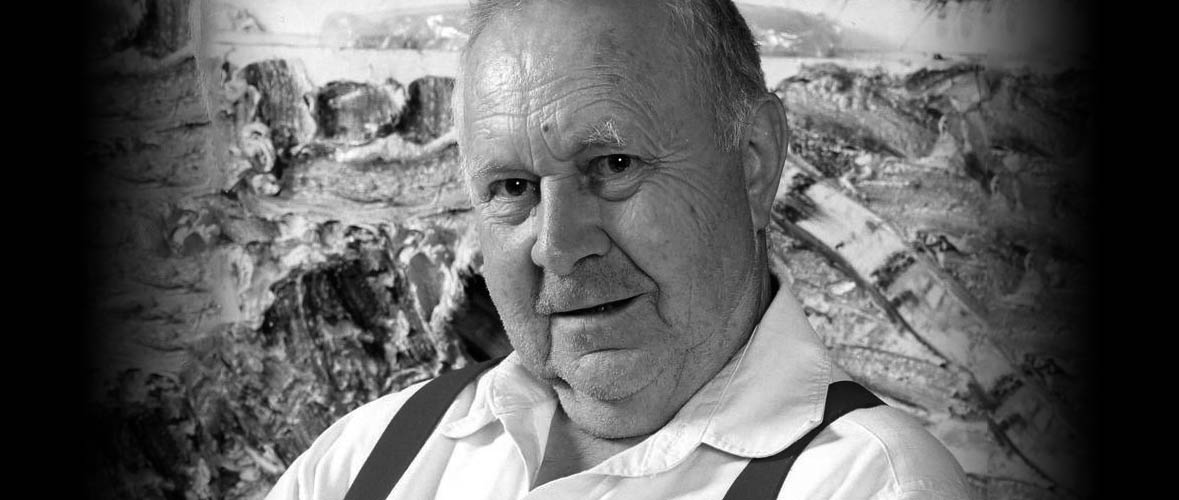

Franz Grabmayr, a key Post-Abstract painter and representative of the European art scene, resisted the influence of fashionable trends in order to pursue his own path. Nature became an inexhaustible source of inspiration for his work. The book entitled In the Shadow of Nature, most faithfully translates the character of his work and classifies it within the ambit of Abstract Expressionism. He perceived abstractness in the context of nature: “I have always worked according to nature, I never turned away from object painting.” However, nature needed to be transformed, to reveal its inner spirituality through color and form. Although his work creates the impression of spontaneity, it was the result of a long search for motifs in nature and their expressive material and their formal adaptation. His favorite subjects were hills and rocks, grain fields, ponds, sand pits and the roots of fallen trees. He made use of the four natural elements, with fire as the form-generating component. His unmistakable painting style was based on work with thick color pastes which he applied to or poured on the canvas. He achieved his relief surface with dramatic impression living the dynamics of abstract vibrating color. The brutal character of his painting became an impulse for “young wild” painting in the late 1970s.
The dynamics of dance was the second area that fascinated Grabmayr, in particular, the freedom and sensuality in its relaxed motion. He penetrated to the meaning of its legacy by closely studying the movement of dancers. Natural motifs and dance motifs combine his ability to depict the power and dynamics of nature and to express the dynamics, rhythm and expression of figures in motion.
Eva Trojanová
Franz Grabmayr (*1927 in Pfaffenberg, †2015 in Vienna) was a Carinthian painter, creator of action paintings and happenings. He started out as a teacher before entering the Academy of Fine Arts in Vienna where he studied from 1954 to 1964. From 1967 to 1969, he was assistant professor and in 1970, he got a scholarship from the Austrian government to study in Venice. At the age of 57 he was awarded the honorary title of “Professor” on account of his independent artistic career. Grabmayr usually spent his winters in Vienna and mainly worked there on his “Tanzblätter” (dance sheets). The rest of the year, nature was his studio.
































